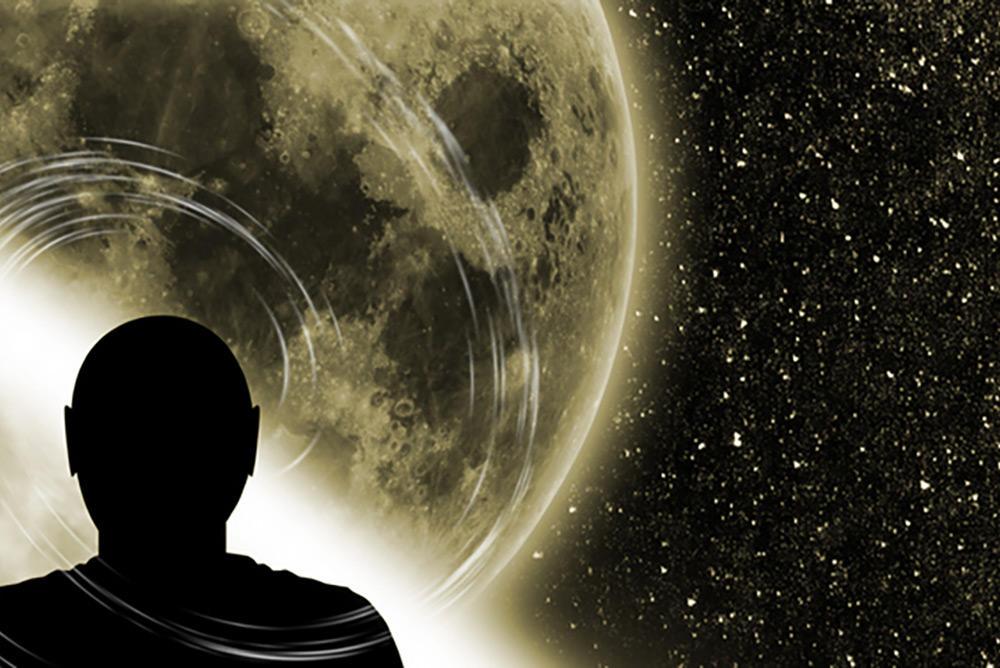
iStock
By Mary Carpenter
HEREAFTER, a 2010 film starring Matt Damon, illuminated stunning similarities of near-death experiences (NDEs) among some 9 to 20% of people who survive life-threatening conditions, including clinical death. But the film did not address reasons for the similarities in such experiences —occurring for very different people in very different circumstances—which recent research has shown to have remarkable parallels to those produced by psychedelic drugs.
In Hemingway’s “The Snows of Kilimanjaro,” a man dying from gangrene experiences “elements of a classic near-death experience: the darkness, the cessation of pain, the emerging into the light and then a feeling of peacefulness,” writes Seattle consciousness researcher Christof Koch in Scientific American. Shared by “about one in 10 patients with cardiac arrest in a hospital, [NDEs] can lead to permanent transformation of their lives.”
“With greater vividness and detail than either real or imagined situations… as being ‘realer than real’” is the salient characteristic of NDEs recalled by 122 survivors in a 2017 University of Virginia study. And neurobiologists Raymond Romand and Gunter Ehret in Strasbourg, France and Ulm, Germany, in their 2023 overview Frontiers paper highlight this clarity as well as the persistence of NDE memories.
“Startling end-of-life brain activity” has recently become measurable in “dying patients at or near the moment of death,” according to Romand and Ehret. The roughly five-minute “transition from cardiac arrest to beginning brain injury” starts with a decline in cortical activity—followed by rising EEG levels that approach those of “normal consciousness… with a maximum duration of a few minutes” before decline and death.
When the brain reaches a critical level of hypoxia, loss of energy among a large number of neurons “causes a cascade of electrical activity [that] may correspond to cellular energy-saving necessary to preserve brain cell integrity,” write Romand and Ehret. And during NDEs, “gamma waves [working] in a well-coordinated way between sensory, motor and association areas of the brain… are associated with brain activity during states, for example, of sensory perception, memory retrieval, waking, dreaming, meditation.”
Gamma waves also mark increased receptivity and processing of sensory signals in experiences with the drug psilocybin. According to the Frontiers article, features of NDEs similar to those reported by people taking psychedelic drugs include “an elastic bond between body and soul, a dark tunnel, meeting spiritual beings and others, entering another world, reaching an alternate value system; seeing a bright warm light, sensing comfort and peace, wonderful locations, sweet feelings, extreme speed of thought and imagination, a rapid view of the whole course of past life, OBEs [out-of-body experiences]…”
“Very often the content of the reports [from American studies of patients who had survived life-threatening situations—car accidents, drowning, cardiac arrest] was emotionally touching,” the Frontiers researchers write, “when details were given about seeing dead relatives, past experiences, traveling the cosmos, meeting strange entities like divine figures, or visualizing a brilliant entity sometimes called the light.”
Psychedelic studies have made important contributions to research on NDEs—which otherwise faces the enormous challenge of “mimicking clinical death with the progression toward brain death…without allowing permanent brain impairment after resuscitation,” the Frontiers researchers explain. A review of more than 600 patients during experiences with more than 150 different medications “provided very useful insight…uncovered remarkable similarities [between NDEs and] the psychological effects of certain drugs—first of all ketamine.”
With ketamine, widely used as anesthesia, patient MRIs show changes in cerebral blood flow linked to “changes in functional connectivity in the brain that may be responsible for NDE-like perceptions and lead to changes in consciousness,” write the Frontiers authors. Most striking, in the narratives of people who had taken ketamine [as a psychedelic drug], “the five most common category themes” were the same as those from NDEs.
Reports of NDEs have also come with the use of other drugs as well as from epileptic seizures and electrical stimulation of the brain. In contrast to “coma-related experiences (such as conventional dreams, delirium, and delusions, in the intensive care unit or elsewhere),” write the Frontiers researchers, NDEs by definition should include “a sense of transcendence; ineffability; and positive transformative effects (related to meaning and purpose to life).”
Seeing the film Hereafter only recently, I was surprised to learn of similarities in different people’s NDEs—notably the weightlessness—because I had always considered my own long-ago experience to be unique. On an early-1970s ski trip, I clumsily fell backwards off a steep cliff onto a boulder-strewn slope: at once I found myself moving weightlessly along with other people in clouds suffused with soft light, and felt happy to be in heaven. When a ski guide fell against me to stop my tumble, I had no physical injuries but cried uncontrollably—I think because I found myself, not in heaven, but still high up on a long difficult slope that I must ski down. My memories from that heavenly day endure with crystal clarity.
—Mary Carpenter regularly reports on topical subjects in health and medicine.
